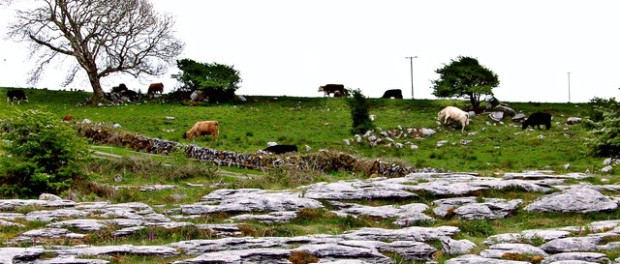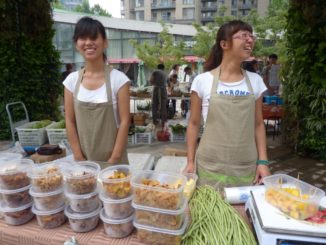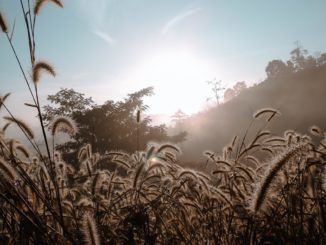CAP ‘greening’, ties up farmers in bureaucracy, uses up valuable public money and still fails to protect nature or the incomes of farmers in marginalised areas adequately. That’s the conclusion to be drawn from the European Forum on Nature Conservation and Pastoralism‘s set of recently released country reports.

Read: ARC2020 article on the EFNCP’s six country reports
Greening as it currently operates at EU and Member State level is, for the EFNCP a “fundamentally flawed EU policy model, especially for semi-natural or High Nature Value pastures.”
EFNCP is a network of farmers, ecologists, nature conservationists and policy makers. Guy Beaufoy, senior policy manager with the organisation: “The mainstream CAP instruments in Pillar 1 fail to address the main challenges and even exacerbate the threat of abandonment or damaging actions by farmers in some situations”
The overall impression the reports give are of loose, sometimes meaningless targets and a lack of joined up thinking. Because of this, a number of experts and organisations are pushing for far more targeted, results based schemes, where farmers have more autonomy and are paid when they hit specific targets.
Ireland is one of the EU countries reported on by EFNCP. And in the case of Ireland severe shortcomings are exposed both in greenness and fairness – two of the supposed key components of the CAP reform process.
CAP and fairness in Ireland
Take fairness. For payments convergence Irish report authors’ Colin Gallagher, Caitriona Maher and Gwyn Jones “have been unable to find any statement that it is the goal of policy to reach a single national payment rate by some specific date.”
Ireland fought against convergence throughout the CAP reform process. In implementation, this continues, with numerous de facto “claw backs” in operation.
Citing the ICSA position, the authors note that “incorporating the Sheep Grassland Scheme payment into the BPS (Basic Payment Scheme) in fact erodes the benefit low payment farmers might have seen through the implementation of internal convergence and a minimum payment.”
For farmers in upland, high nature value areas, the Beef Data and Genomics Programme also works against their financial interests and against extensive, low-input, semi natural grassland systems, the report finds.
Damningly, the report authors claim that the programme “should probably be seen as part of an effort to ‘rebalance’ the CAP in favour of those who will lose out from the redistribution of Pillar 1 funds”. Similarly, “the loss of the (headage-based) sheep grassland scheme is perhaps part of the same pattern – lessening the cumulative drift of money to marginal areas”.
The purpose and execution of both Pillar 1 and Pillar 2 greening or agri-environment measures comes across as woolly at best. Phrases such as “apparently contradictory payments” and “makes the method of reporting chosen by Ireland particularly meaningless” pepper the report.
Ineligibility (of farmland) regarding Pillar 1 payments emerges as a mess, with a reduction from 85% to 3% ineligibility recorded in south Galway, following a legal challenge.
CAP and the environment in Ireland
Nature too is a victim because the “rules have not been well adapted for pastures with trees”… “where isolated or scattered groups of trees form part of the pastoral landscape…there is little or no guidance relating to these areas….With fear of penalties farmers could easily be redlining areas of trees while the areas beneath the canopy are perfectly grazable.”
Despite high levels of permanent pasture and the threats of loss to through various types of intensification “Neither the ESPG (environmental sensitive permanent grassland) rules nor the permanent pasture controls do anything to address” the threat of intensification, leaving these areas “highly vulnerable”.
Pillar 2 payments emerge as slightly more targeted and constitute “a distinct step forward from previous RDPS in terms of focusing attention on likely outcomes”. Nevertheless Pillar 2 measures “are generally disappointing in their design and criteria”; while the “overall coherence” of the two Pillars leaves much to be desired.
Conservation status indicators in Ireland’s Rural Development Plan are described as representing “a broad suite of problems which prevent good ideas on paper from becoming meaningful tools in practice”…“these indicators are not being taken seriously in DAFM (the Department) and until that changes, or until DG Agriculture takes a real interest in the issues they address, they perform no real useful function.”
Its not just the Department who come in for a grilling. Ireland’s largest farming organisation The Irish Farmers’ Association – the IFA – emerge as having largely abandoned farmers on marginal land. “The Reduction Co-efficient has had the result of re-widening the divide between areas of intensive farming and extensive farming. Groups like the IFA welcome the change while smaller farmers on marginal land are left with the possibility of having land completely ineligible … The costs of shepherding a 100 ha mountain which is 65% ineligible are still much greater than those associated with managing a smaller but completely eligible parcel of 35 ha.”
Indeed “it turned out that the IFA was giving a message which was so unacceptable to a large proportion of their members in the west that a new body was formed – this would have lessened the value of the IFA as the traditional sounding board for the Department.”
Solutions – results based schemes in Ireland
So, as the CAP mid-term review looms, what is to be done? The answer, for a growing number of organisations like the EFNCP, is to re-calibrate towards results. Results-Based Agri-environment Payment Scheme (RBAPS) – schemes which reward farmers for how well a specific indicator performs – have emerged in ten European countries. In Ireland the best known example is the Burren LIFE project.
BurrenLife
Self-describing on their website, they state:“‘Burren Life is results-based. Simply put, we reward those farmers who deliver the highest environmental benefits. Conservation becomes as much a product for the farmer as the livestock produced”
The Burren programme pays for actions – such as scrub clearance – and outputs – such as well-managed grassland with abundant wildflowers. Each field has an annual ‘health check’ for grasslands and other habitats, which are specific to the Burren. The higher the score, the greater the payment made to farmers, up to a score of 10 out of 10 for the best quality grassland or habitat.
“We found that our results-based approach works very well because it gives the farmers here a target for improving their environmental performance….it gives the farmers a new language to talk about the environment and their environmental output. And one that makes real sense to them” Dr. Brendan Dunford, BurrenLife project coordinator says.
Read about the BurrenLife programme
Leitrim Shannon Callows and Navarra
Now a new results-driven initiative has received funding for three years. Called the Results-based Agri-environment Pilot Scheme, this project – one of only two funded under a specific EU call – will run until June 2018 with participating farmers and local stakeholders in Co. Leitrim, the Shannon Callows and Navarra, Spain.
Eventually, the organisation plans to work with “up to 65 farmers in Ireland and Spain” according to their first newsletter, issued recently: “the RBAPS teams aim to build on the Burren model which uses understandable indicators which aim to score the quality of nature (biodiversity) of farmland. The score given reflects the quality of nature produced which is linked to the level of payment to the farmer.”
Read RBAPS Newsletter Spring 2016
Blackstairs farming group
And elsewhere in Ireland, others are clamouring to do similarly. The Blackstairs Farming Group, also part of the EFNCP – released in December their proposal for locally led results based scheme.
Their proposal will, they claim “maintain and enhance important features of biodiversity and farming systems which are important for biodiversity. While focusing primarily on the maintenance and improvement of habitat condition, the proposed measure will incorporate support for actions on commonages which are over and above those covered by GLAS. By being available to land outside the commonage which is managed by commonage farmers, in contrast to GLAS, it will offer support for the management of a wider range of associated semi-natural habitats.”
The proposal exposes the fact that the GLAS Commonage Management Plan “does not include monitoring of habitat condition.”
The specifics of the Blackstairs as a place – one with a red grouse and hen harrier population – are incorporated in the proposal.
“An overall Blackstairs quality indicator should be elaborated within the community. This should incorporate objectives relating to the maintenance of the semi-natural habitats, especially those found in Annex 1 of the Habitats Directive, by:
Maintaining appropriate levels of grazing
Implementing good burning management
Increasing red grouse population
Encouraging nesting hen harrier and other priority species
Ensuring that all water bodies within the Blackstairs achieve and are maintained at high ecological status
Read Blackstairs Proposal in full
Conclusion
CAP as it currently operates is not well targeted. While Pillar 2 is more precise, even this aspect of the CAP could be vastly improved. Last week’s article on the six reports by Guy Beaufoy exposes this, in the case of High Nature Value farming.
By maintaining and optimising habitat – in the Burren, the Shannon Callows, the Blackstairs and, increasingly, in pockets around Europe, these results-based initiatives represent what CAP is supposed to be. Public good for public money, with more autonomy for farmers. What’s not to love?
A version of this article also appeared in the Irish Examiner newspaper’s Farming Section.





